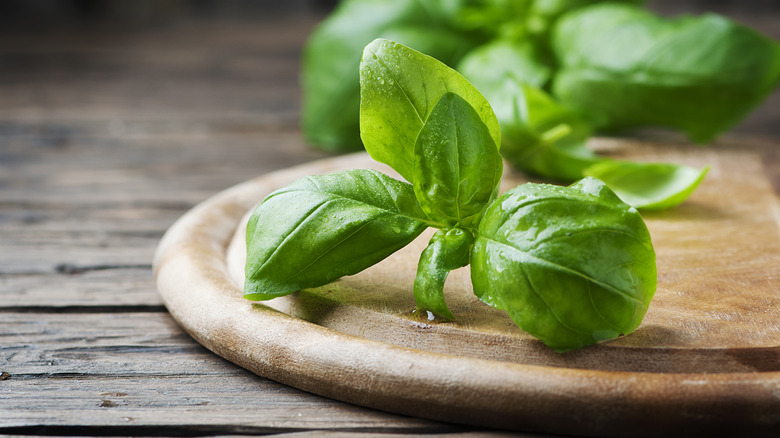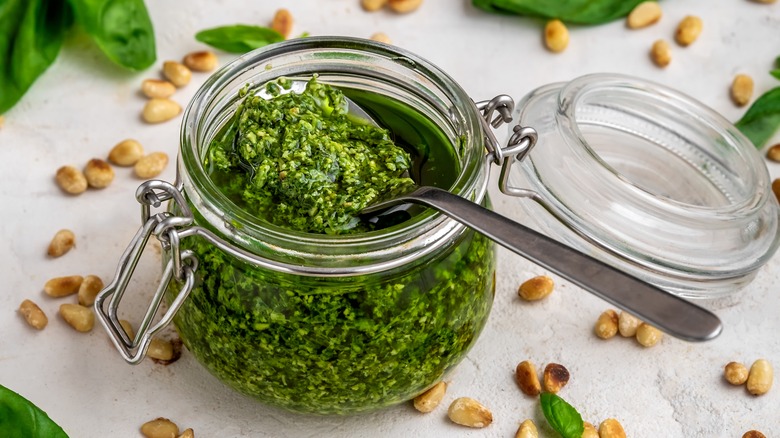Why You Should Stop Throwing Away Basil Stems
When it comes to herbs, basil is definitely among those we favor. According to MasterClass, this green, leafy flavor enhancer adds both peppery notes as well as a touch of pungent sweetness to the recipes it touches. They go on to share that basil is actually part of the mint family and that there are more than 60 different varieties of this herb. It is often used to make a pesto that can be used as a spread on a sandwich or a sauce for pasta. In addition, it is an essential part of a caprese salad, pairs well with fish, and can add a subtle umami to soup. Fresh basil can also impart its aromatic, savory taste to a yummy cocktail or mocktail.
While the leaves of basil generally get all the love when it comes to cooking, it's not the only part of this plant you should be cooking with. As a matter of fact, according to For the Love of Basil, when looking at the anatomy of this herb, if you are putting the stems down the garbage disposal, you are allowing a whole lot of flavor to go to waste.
Use them in a salad or soup
Taste of Home concurs and notes that while the first step for readying your basil for use in a recipe is to separate the stem and the leaves, you want to hold on to the stems because they can be used in soups or rice dishes. That said, they do caution that you do not want to use them in place of the leaves, as they can be a little bitter for the taste buds.
For the Love of Basil goes on to share that while you can use the leaves and stems of a basil plant for your pesto, the stems are a welcome addition to a salad. Just chop them up finely if you are adding them to a salad as they can be a little chewy if you do not. Basil stems will add a nice and unexpected flavor punch to your leafy greens; However, For the Love of Basil warns that you only want to use the tender, delicate stems, not the thicker more meaty part of the plant. Apparently, it is not so tasty and may have you tossing your entire dish.
If you don't have plans to use those stems anytime soon, For the Love of Basil suggests placing them in a freezer-safe storage bag along with some veggies. Then, when you are ready to make a broth, you can just dump the contents into a pot of water and you're in business.

